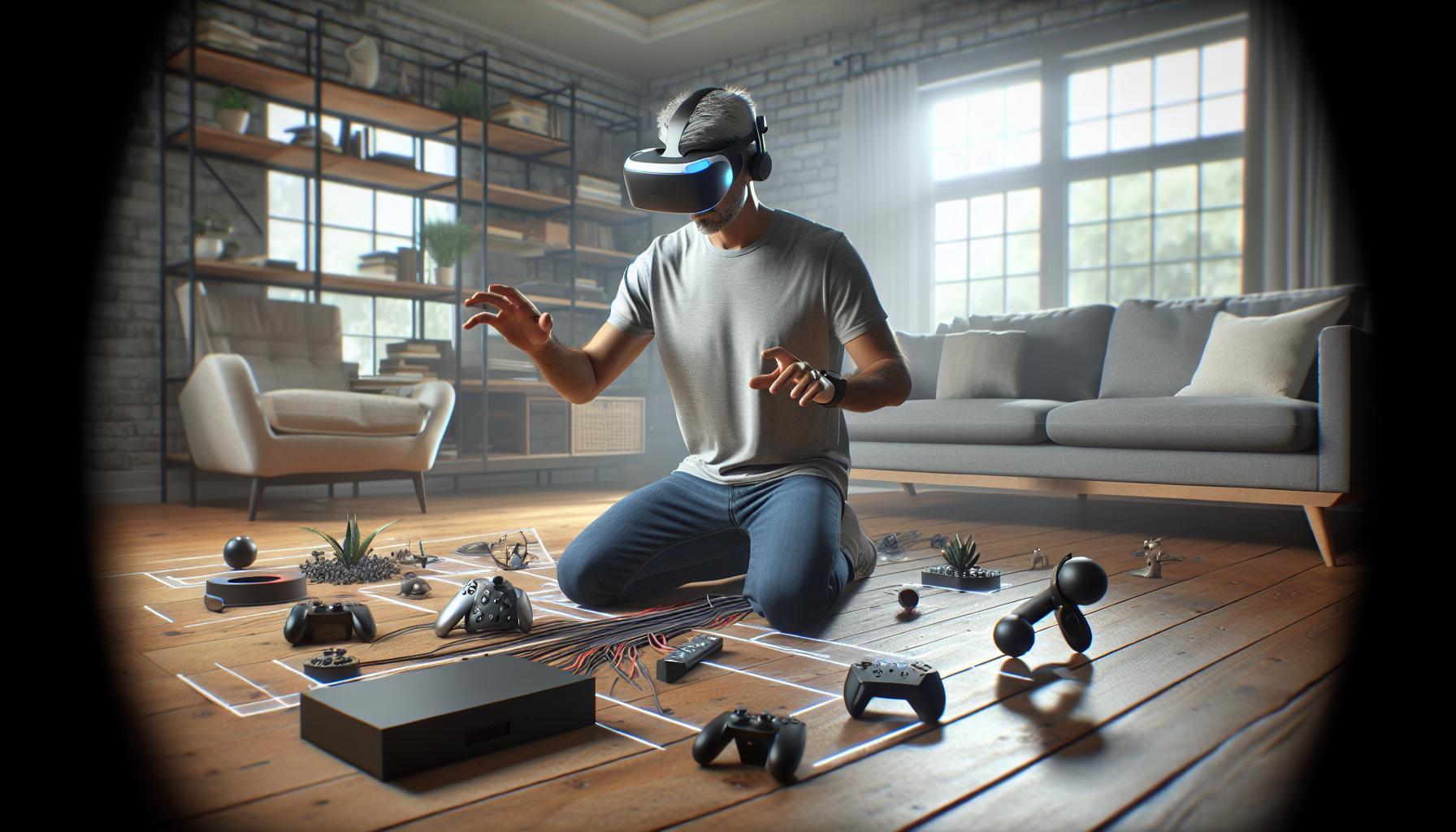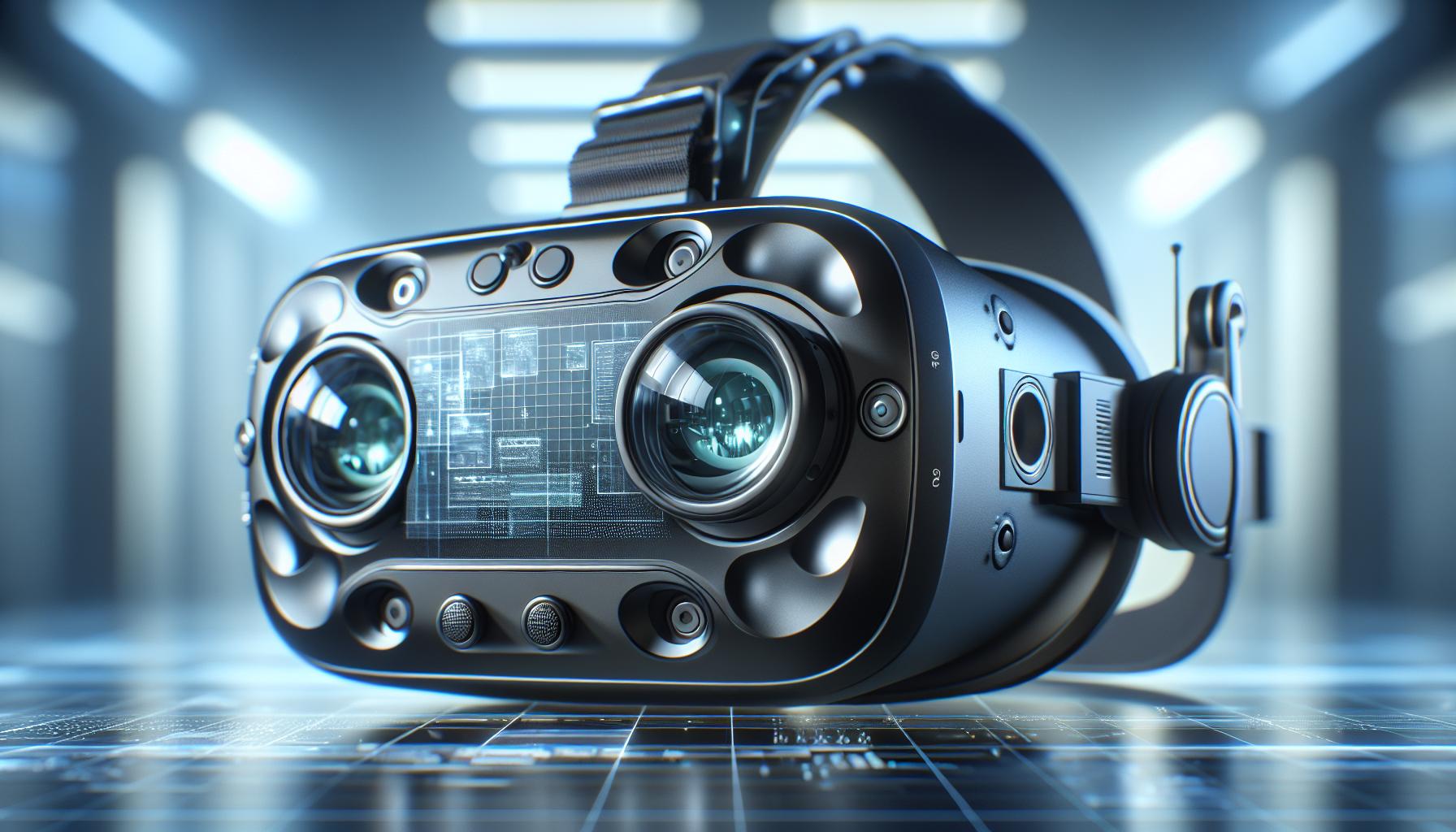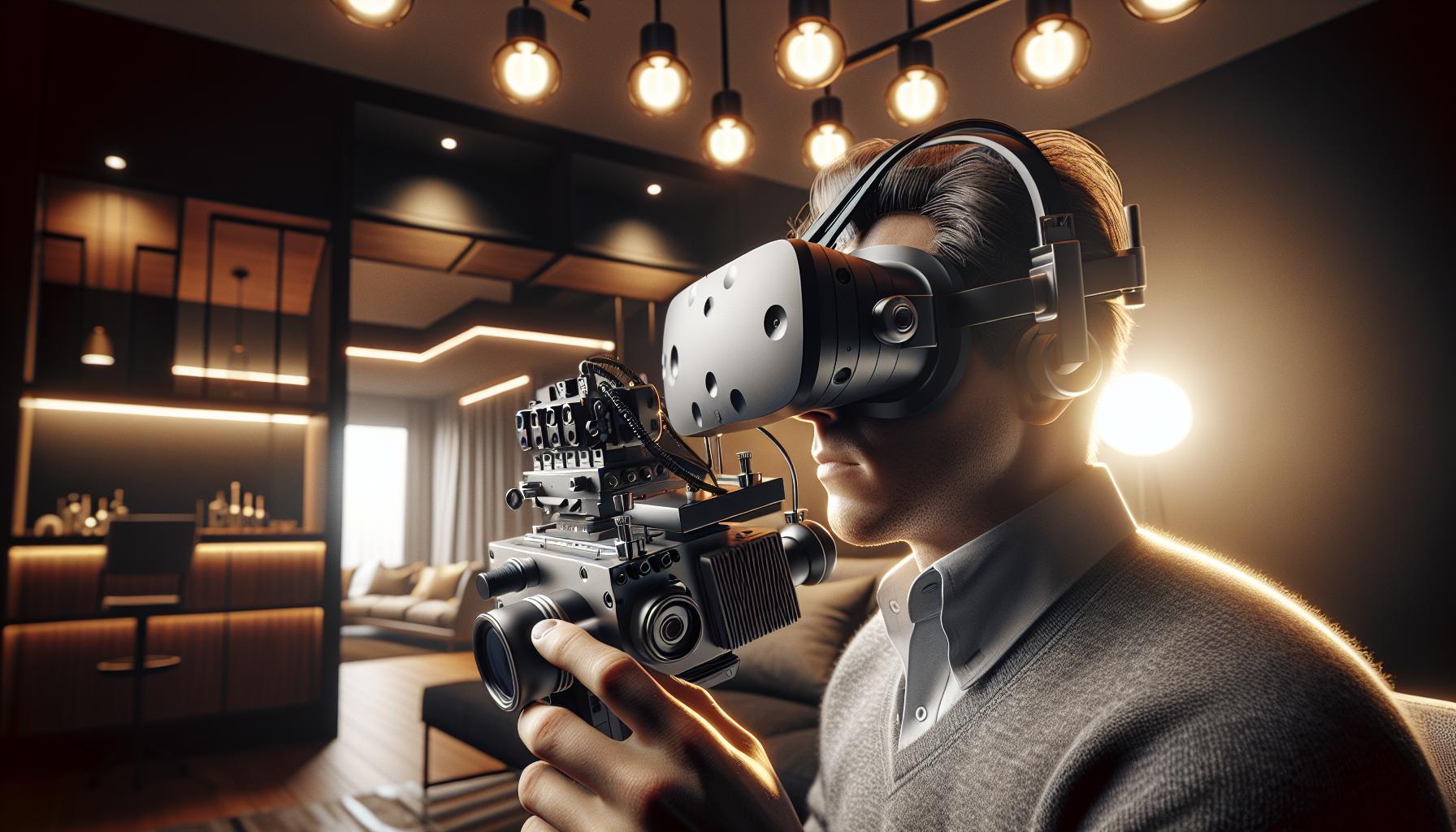Virtual reality headsets transport users into immersive digital worlds with mind-bending technology that feels like science fiction come to life. These high-tech wearables blend cutting-edge displays optics and motion tracking to create convincing 3D environments that respond to every head movement in real-time.
Behind the magic of VR lies an intricate dance of sensors processors and specialized screens working in perfect harmony. While early VR attempts in the 1990s left users dizzy and disappointed today’s headsets deliver smooth lag-free experiences that can fool the brain into accepting virtual worlds as reality. From gaming and entertainment to education and professional training VR technology continues to push boundaries and reshape how humans interact with digital content.
How Do Virtual Reality Headsets Work
Virtual reality replicates real-world environments through digital simulation, creating 3D spaces users can explore and interact with. The technology combines specialized hardware and software to generate realistic sensory experiences, including visual, auditory, and sometimes haptic feedback.
Immersion in VR occurs through three key elements:
- Stereoscopic Display
- Presents two slightly offset images to each eye
- Creates depth perception and 3D effect
- Mimics natural binocular vision
- Motion Tracking
- Monitors head position and movement in real-time
- Updates visual display to match user perspective
- Tracks hand controllers for interaction
- Field of View
- Spans 90-120 degrees horizontally
- Covers peripheral vision
- Blocks external visual distractions
The human brain processes these VR elements as genuine sensory input, leading to presence—the psychological sensation of being inside the virtual environment. This sense of presence intensifies when VR systems maintain low latency (under 20 milliseconds) between user movement and visual updates.
Modern VR systems achieve immersion through technical specifications that match human perception:
| Feature | Specification | Impact |
|---|---|---|
| Resolution | 2160×2160 per eye | Sharp, clear visuals |
| Refresh Rate | 90-120 Hz | Smooth motion |
| Response Time | < 20ms | Reduced motion sickness |
VR creates convincing digital experiences by synchronizing visual input with user movements, maintaining consistent frame rates, and delivering high-resolution graphics that engage multiple senses simultaneously.
Core Components of VR Headsets

VR headsets integrate multiple specialized hardware components to deliver immersive virtual experiences. Each element serves a specific purpose in creating convincing digital environments.
Display Technology and Optics
VR headsets use high-resolution OLED or LCD displays to present visual content independently to each eye. These screens feature pixel densities exceeding 800 pixels per inch coupled with refresh rates of 90Hz or higher to minimize motion blur. Advanced optical systems incorporate specially designed lenses that magnify the display output while correcting for distortion. Fresnel lenses reduce the overall weight by using concentric rings rather than thick curved glass. Anti-aliasing algorithms smooth jagged edges in real-time while chromatic aberration correction maintains color accuracy across the field of view.
Motion Tracking Sensors
Modern VR headsets employ multiple tracking technologies to monitor user movement with sub-millimeter precision. Integrated accelerometers measure linear acceleration while gyroscopes detect angular rotation across three axes. Magnetometers provide directional orientation by measuring magnetic fields. External tracking systems like cameras or base stations supplement internal sensors to enable room-scale experiences. Inside-out tracking uses onboard cameras to map surroundings through computer vision algorithms without external hardware.
Controllers and Input Devices
VR controllers translate physical actions into virtual interactions through precise motion tracking. Each controller contains accelerometers gyroscopes haptic feedback motors touch-sensitive buttons triggers analog sticks. Hand tracking cameras capture finger movements enabling natural gestures without physical controllers. Advanced haptic systems provide tactile feedback through vibrations patterns force simulation. Specialized peripherals like VR gloves treadmills body trackers expand interaction possibilities beyond standard controllers enhancing immersion through additional input methods.
The Science Behind VR Display Systems

VR display systems combine specialized hardware components to create convincing 3D environments. These systems utilize advanced optical techniques to simulate depth perception and natural vision.
Stereoscopic 3D Imaging
Stereoscopic 3D imaging replicates natural human vision by displaying slightly different images to each eye. The VR headset contains two separate displays positioned at ideal interpupillary distances (55-70mm) to match human eye spacing. Advanced lens systems magnify these displays while correcting optical distortions. The brain processes these offset images to create depth perception, similar to how humans perceive the real world. Modern VR headsets employ fresnel lenses that reduce the physical distance between eyes and displays to 10-20mm while maintaining proper focal length.
Field of View and Resolution
VR displays provide extensive fields of view ranging from 90 to 120 degrees horizontally. High-end headsets feature resolutions up to 2160 x 2160 pixels per eye, delivering sharp image quality across the visual field. Current display panels operate at refresh rates between 90Hz to 120Hz to minimize motion blur. The combination of wide FOV and high pixel density creates a seamless viewing experience that fills peripheral vision. Premium VR systems incorporate eye-tracking technology to enable foveated rendering, concentrating pixel density where users focus their gaze.
Motion Tracking and Spatial Awareness

Motion tracking systems in VR headsets monitor user movements in real-time to update the virtual environment accordingly. These sophisticated tracking mechanisms combine multiple sensors and technologies to deliver precise positional data.
Accelerometers and Gyroscopes
Accelerometers measure linear acceleration along three axes while gyroscopes detect rotational movement around these axes. The accelerometer tracks head position changes in forward/backward, up/down, and left/right directions. Gyroscopes complement this by monitoring pitch, yaw, and roll movements of the head. Together, these sensors capture data at rates up to 1000 times per second, enabling the VR system to reflect user movements with minimal latency. Modern VR headsets integrate these components into Inertial Measurement Units (IMUs) that provide sub-millimeter accuracy in tracking.
Inside-Out vs Outside-In Tracking
Inside-out tracking uses cameras built into the headset to scan the surrounding environment for spatial reference points. These cameras map room features like walls, furniture, and floors to establish position without external sensors. Outside-in tracking relies on external base stations or cameras placed around the play area to monitor the headset’s position. The base stations emit infrared signals that sensors on the headset detect to determine precise location coordinates. While inside-out tracking offers greater portability, outside-in systems typically provide more accurate tracking for larger spaces. Premium VR systems often incorporate both methods to maximize tracking reliability.
Processing and Rendering VR Content
Virtual reality processing involves complex computational tasks that transform user inputs into seamless visual experiences. The rendering pipeline converts 3D models, textures, and animations into immersive virtual environments in real-time.
Graphics Processing Requirements
VR systems demand powerful graphics processing units (GPUs) to render two separate high-resolution images simultaneously – one for each eye. Modern VR applications require GPUs with at least 6GB of VRAM to handle detailed textures, complex geometry, and post-processing effects. The GPU processes data at rates of 90 frames per second or higher while maintaining visual quality through:
- Mesh optimization techniques for reduced polygon counts
- Dynamic level-of-detail adjustments based on viewing distance
- Texture compression algorithms to minimize memory usage
- Foveated rendering for optimized performance in user’s focal area
- Multi-view rendering to eliminate redundant calculations
Latency and Refresh Rates
Motion-to-photon latency directly impacts user comfort in VR experiences. High-end VR systems maintain latency below 20 milliseconds to prevent motion sickness. The refresh rate requirements include:
| Component | Minimum Rate | Optimal Rate |
|---|---|---|
| Display Refresh | 90 Hz | 120+ Hz |
| Motion Tracking | 500 Hz | 1000 Hz |
| Controller Input | 250 Hz | 500 Hz |
- Asynchronous time warp for smooth frame delivery
- Frame interpolation to maintain fluid motion
- Low persistence displays to reduce motion blur
- Predictive tracking algorithms to minimize perceived delay
Health and Safety Considerations
VR headset users experience specific physical effects that require attention during extended use. Extended VR sessions create unique challenges for eye comfort, requiring breaks every 30 minutes to prevent eye strain.
Motion Sickness Prevention
Cybersickness symptoms emerge when visual input conflicts with physical sensations. Users minimize discomfort by:
- Starting with short 15-minute sessions
- Using experiences rated comfortable for beginners
- Maintaining stable standing or seated positions
- Ensuring proper headset calibration
- Taking immediate breaks when discomfort occurs
Physical Space Requirements
Safe VR usage demands specific spatial considerations:
- Clear 6.5 x 6.5 feet play area
- Removal of nearby obstacles
- Non-slip floor surface
- Cable management systems
- Proper lighting conditions
Eye Care Guidelines
Proper eye care practices protect vision during VR use:
- Following the 20-20-20 rule: 20 seconds break every 20 minutes
- Maintaining proper lens cleaning
- Adjusting IPD settings correctly
- Using blue light filters when available
- Setting appropriate brightness levels
| Health Aspect | Recommended Duration | Break Length |
|---|---|---|
| General Use | 30 minutes | 15 minutes |
| Eye Rest | 20 minutes | 20 seconds |
| Physical Movement | 45 minutes | 10 minutes |
Manufacturers integrate safety features into modern VR systems including proximity sensors, boundary warnings, and automatic pause functions. Physical symptoms like eye fatigue, neck strain, or balance issues indicate the need for immediate session termination.
What Is Virtual Reality and How It Creates Immersion
Virtual reality headsets represent a remarkable fusion of cutting-edge technology and human-centered design. Through advanced display systems precise motion tracking and sophisticated processing these devices transport users into richly detailed digital worlds.
As VR technology continues to evolve manufacturers are pushing boundaries with higher resolutions better tracking systems and more comfortable designs. The future of VR looks promising with innovations in eye tracking haptic feedback and wireless capabilities making experiences even more immersive and accessible.
Whether for gaming professional training or social interaction VR headsets have transformed how humans interact with digital content. They’ve opened doors to new possibilities that were once confined to imagination making virtual experiences feel increasingly real and meaningful.



